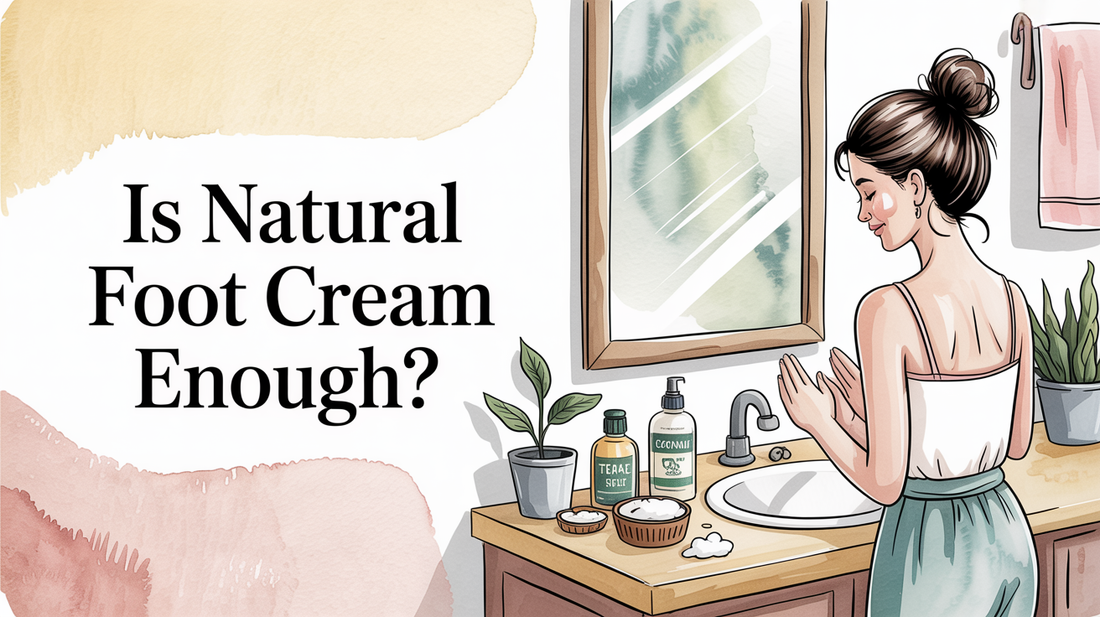Is natural foot cream enough to prevent fungus?
natural foot cream, antifungal vs natural, prevention limits — Foot health is vital, yet many wonder if a natural foot cream can truly help in preventing fungal infections. This post explores the balance between moisture and microbial growth, the limitations of natural solutions, and a hybrid approach for optimal protection. Let's dive into three clear sections that can guide you in taking effective action tonight.
Moisture vs microbes 🧭
Understanding the relationship between foot moisture and fungal growth is essential. Fungi thrive in warm, moist environments—conditions commonly found in shoes. While natural foot creams can moisturize and offer some antimicrobial benefits, they may not fully prevent all fungal infections. Ingredients like tea tree oil and coconut oil provide mild antifungal properties, supporting skin barrier function, which serves as the first line of defense against invaders.
However, it’s important to maintain a balance. Over-moisturizing can lead to conditions that actually promote fungal growth. Therefore, ensuring your feet receive the right amount of moisture without excess is crucial for foot health.
- Fungi thrive in warm, moist environments.
- Natural ingredients like tea tree oil and coconut oil have mild antifungal properties.
- Proper moisturization maintains skin barrier function, essential for protection.
- Over-moisturizing can create ideal conditions for fungal growth.
- Finding the right balance is key for healthy feet.
Try It Tonight: Calm, Fresh Feet ✨
- Wash feet with warm water and mild cleanser; ensure to dry thoroughly between toes.
- Apply a small amount of Kissable Feet where needed; massage until absorbed.
- Let skin breathe; consider slipping on breathable socks if desired. Remember to patch-test first if you’re new to this foot cream.
When naturals fall short ✨
While natural foot creams offer gentle care and mild antimicrobial effects, they have limitations when it comes to preventing or addressing established fungal infections. Natural antifungal compounds are generally weaker than synthetic medications. For example, someone with a high-risk condition—like an athlete or a diabetic—may find that a natural cream alone isn’t sufficient for their needs.
Moreover, the concentration of active ingredients in natural products is often inadequate for serious prevention. Some fungi may even develop resistance over time, making it vital for individuals at higher risk to consider stronger alternatives.
- Natural antifungal compounds are typically weaker than synthetic options.
- Concentrations in natural creams may not be enough for serious prevention.
- Some fungi can develop resistance to natural compounds over time.
- High-risk individuals may need more robust protection.
- Natural products often lack standardized potency, leading to inconsistent effectiveness.
Why We Recommend a Gentle Helper 🌿
Kissable Feet is designed for quick absorption and offers a soothing, non-sting experience. This nurse-crafted blend includes tea tree, coconut, and calendula, making it a comforting addition to your nightly routine.
- Fast-absorbing comfort—non-greasy finish.
- Gentle sensation suited for sensitive, overworked feet.
- Clean-leaning, bedtime-friendly scent.
Hybrid approach 🔍
Combining natural foot care with targeted antifungal strategies provides the most comprehensive protection. This hybrid approach utilizes the gentle benefits of natural ingredients while ensuring that adequate antifungal coverage is available when needed.
Daily maintenance with natural creams supports skin health, while incorporating proven antifungal ingredients like undecylenic acid can enhance protection. It's wise to apply natural products during low-risk periods and stronger formulations during high-risk activities.
- Use natural creams for daily maintenance and skin support.
- Incorporate proven antifungal ingredients for enhanced protection.
- Apply natural products during low-risk periods, stronger formulations during high-risk activities.
- Combine topical treatments with proper hygiene and environmental controls.
- Rotate between natural and conventional products to prevent resistance.

